Spring 2019 - Seeking People Friendliness in Hong Kong and Singapore
![]()
So far, this year, we have savored a month in balmy Puerto Vallarta, and then February came and we returned to Albuquerque and Scottsdale. You might ask, "Why would warmth loving Nomads spend a month enduring real winter?" Well, sometimes health and business issues can intervene with even the best made plans and wishes!
While we were hanging out in Puerto Vallarta, Albuquerque, and Scottsdale, we were pondering where our next Nomad Journey should take us. Initially, we considered a return to Mexico or Argentina or Chile and yet, we found ourselves ready for a journey further afield - but where?
Then, one evening, over dinner, we had an inspiration - Asia! Singapore has been on our 'Places List' for quite a while and the weather there is always warm. The architecture is innovative and futuristic, the community is clean, crime free and orderly, and the fusion of Chinese, Indian, Maylay, and Anglo cultures offers us a perfect laboratory for Urban Ecologists.
As we began planning, we decided that with a two month window, we could add another place - Hong Kong jumped onto the list. We had visited in 2006 and were ready to return for a longer stay. This very cosmopolitan Chinese city offered another laboratory for Urban Ecologists with its own Anglo history and its unique relationship with Mainland China. So, now we had a plan. Hong Kong would be our first stop, and on March 5, we flew west and arrived on March 7!
The Nomads were on the road again!
Arriving in Hong Kong after many hours of flying, we realized as soon as we boarded the bus to ride into Kowloon that Hong Kong was a truly amazing, spectacular place! The ride took us over massive spans across the waterways, past clusters of high rise buildings, forested mountains, past a huge container port and on into downtown Kowloon.
Our hotel was just a block off Nathan Road, Kowloon's main street, and after a good meal and a better night's sleep, we were ready to begin exploring. Two visits to Hong Kong's History Museum filled in many gaps in our knowledge of this island's history, from the earliest settlements of farmers and boat people with their special cultures, on to the British arrival and the Opium Wars that culminated in it becoming a British colony. Under British control Hong Kong became a major participant in the world economy, which it has retained even after its return to Chinese control in 1997.
The Chinese have taken it from there! Today, Hong Kong has a population of 7,242,000 and a density of 6,690 persons per square kilometer. Most people live in high rise apartment buildings, most of great height. Yet there is a surprising amount of space set aside for parks and sports fields, along with additional open spaces on Hong Kong Island and the less developed areas in the New Territories further north.
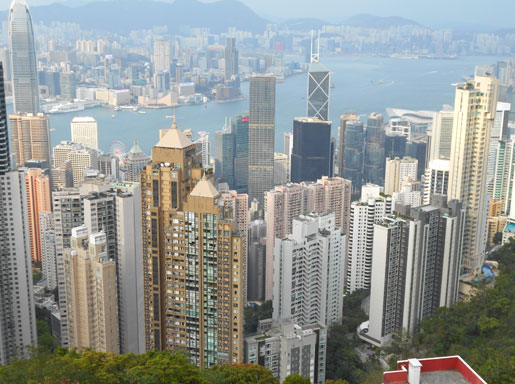
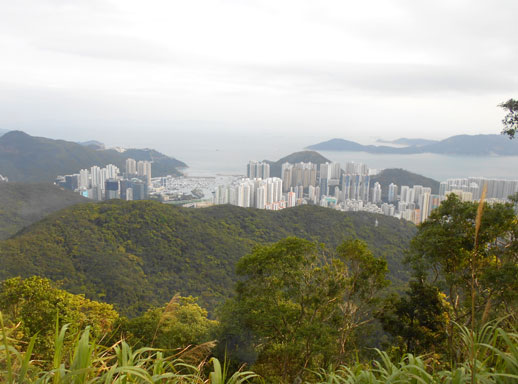
Hong Kong Harbour offers a unique setting for the city's vast number of skyscrapers, more than any other city in the world we learned! From Kowloon's waterfront, looking across the blue green waters of Victoria Harbour, the skyline rises majestically, with the heights of Victoria Peak rising behind. Most conspicuous by its height is the International Commerce Center rising 484 meters (1588 feet) on Kowloon, but it's joined by many more like the IFCTower on Hong Kong Island!
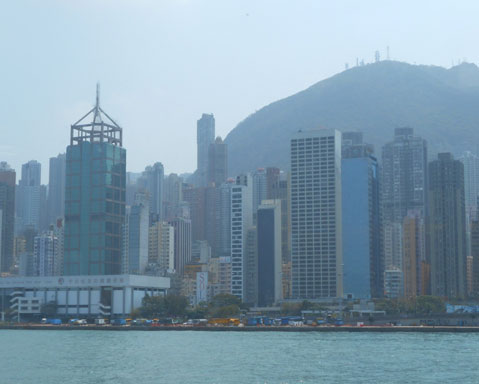
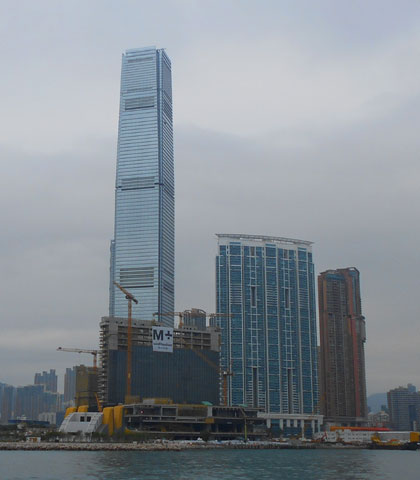
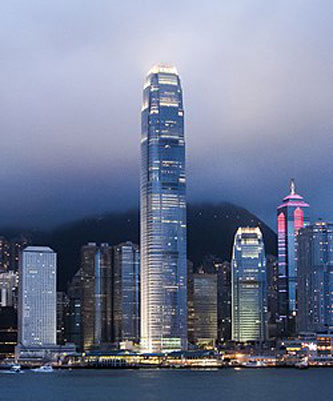
Life in Kowloon among so many people can be a bit frantic, especially in the evenings when everyone is walking on Nathan Road and the adjoining streets! Shop windows and store fronts offer visual delights and oddities to distract from watching where one is going! Most signs are in Chinese, of course, which shed no light on their meaning. Fortunately, many people speak English so we were able to communicate. Finding vegetarian food proved to be problematic since most dishes are prepared with meat.
After a week in Kowloon, we moved to a hotel in the western district of Hong Kong Island. Our room on the 26th floor offered a view of the harbour and the neighboring skyscrapers. This area was more residential with schools and the University of Hong Kong nearby. The Sun Yat Sen Memorial Park at the Harbour's edge was just 500 meters away - great for morning walks!
From our new 'home' we continued our exploration of this vibrant city with boat rides around the harbour, a visit to Victoria Peak for wonderful views over the city and the harbour and just becoming more comfortable with life in this very different place.
Click here to read our story, or
Click here to view our Flickr Album, and be sure to mouseover each picture to read our captions.
On to Singapore
After three weeks, it was time to move on to our next destination - Singapore. We returned to the airport for our flight, on an Airbus A380 - our first trip on this jumbo airplane. Once on board, we found that it feels much like any plane this big, and our flight was very pleasant, with the nice service you expect on Singapore Airlines.
Our first home in Singapore was an Ibis Hotel in the Novena area. Just a few miles.north of the downtown, this turned out to be a good choice as it was a more local neighborhood, but still a short bus ride from the places we were planning to visit in the downtown.
An early impression of Singapore was 'It's so GREEN!' We later learned that when the tiny island became an independent republic in 1965, it was decided that the urban environment needed to be softened by greenery and they have held on to this principle intently!
During our three week stay, we learned that there are many aspects of Singapore that make it a very interesting and special place. One that we encountered early is that there are some truly extraordinary buildings here, such as the Marina Bay Sands Hotel and the Pinnacle urban housing project.
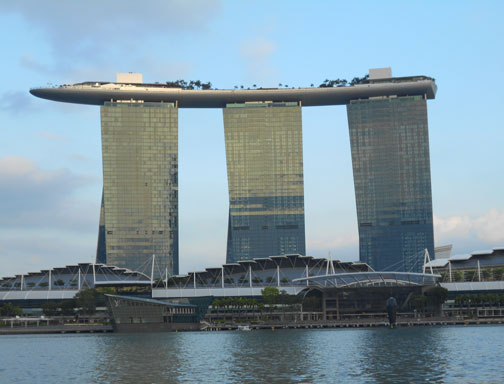
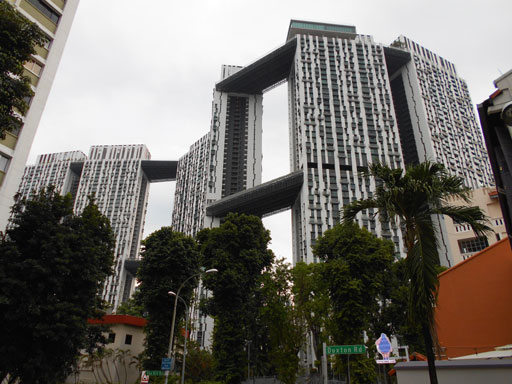
Having returned to the US, we can truly say that we found Singapore to be an even more amazing and fascinating place than we first thought.
Click here to read our story, or
Click here to view our Flickr Album, and be sure to mouseover each picture to read our captions.
Click here to return to Our Searching the World page
![]()